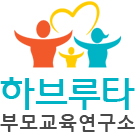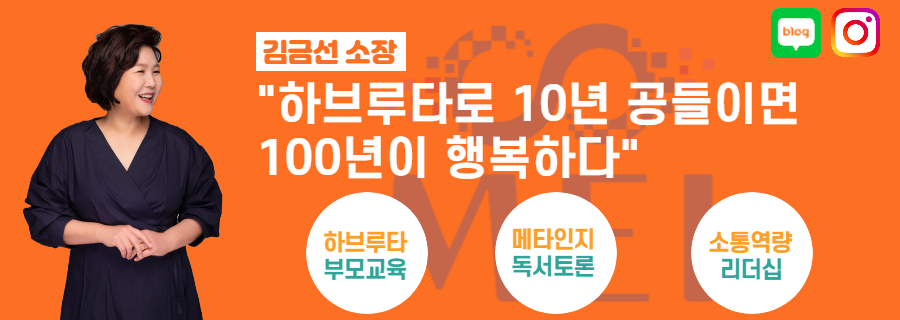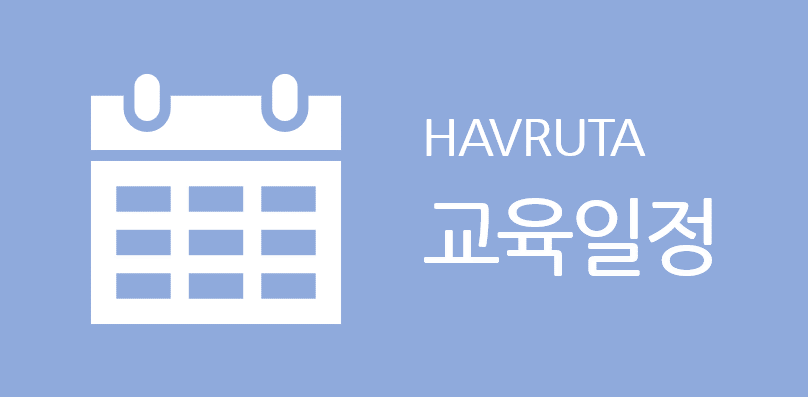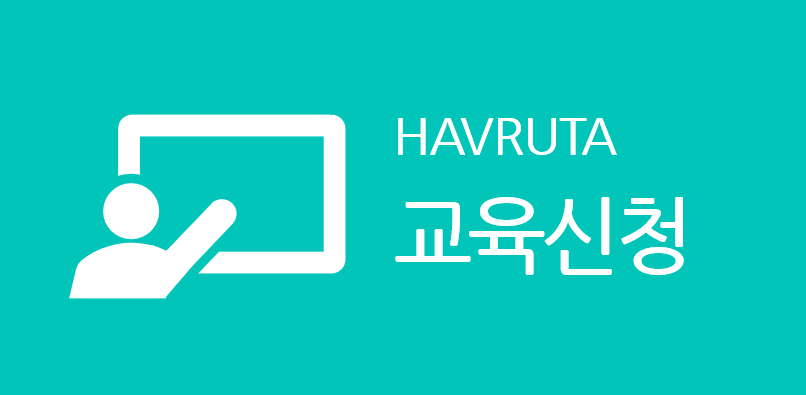더 뉴욕커] 어떻게 탈무드는 한국에서 베스트셀러가 되었는가
지난해 4월쯤 한국에서 탈무드와 탈무드교육에 관해 취재했던 프리랜서 기자 로스 알비스가 1년 2개월만인 지난 6월 23일에 <더뉴욕커>지에 게재한 기사입니다. 저를 포함해 쉐마교육 전문가, 탈무드와 하브루타 교육을 현재 하고 있는 분들을 대상으로 인터뷰를 진행했고 이미 40년 전에 한국에서 탈무드 바람을 일으켰던 랍비 마빈 토카이어와 그를 바라보는 유대인의 시각 그리고 한국에서 진행되는 조금은 색다른 탈무드 교육에 대해서 유대인들이 어떻게 생각하고 있는지 다양한 각도에서 조명하고 있습니다.
한 마디로 요약하면 한국에서의 탈무드 교육 열풍은 유대인들의 그것과는 다르다는 것입니다. 유대인들은 유대인다운 인간을 양성하기 위한 교육으로 탈무드가 역사적으로 전통적으로 중시돼 왔다면 우리는 그들의 성공의 비밀이라는 이유로 탈무드교육을 바라보고 있어서 무척 세속적이라는 생각이 듭니다. 그래서 일부 유대인들은 탈무드를 유대인에게 하나님이 주신 선물로 생각하고 다른 이방인들이 그것을 배우는 것을 못마땅하게 생각합니다. 탈무드에는 딱 한 구절만 이방인에게 탈무드를 가르쳐선 안 된다고 기록하고 있다고 합니다.
저는 로스 기자에게 이메일 답장에서 이방인들에게 탈무드를 가르치는 것은 금지다라고 생각하는 유대인들에게 이렇게 말하고 싶다고 했습니다. "하나님의 가장 크고 가치있는 계명은 나누는 것입니다. 그것이 탈무드일지라도 말입니다."
어쨌든 종교적인 관점에서 보면 기독교에서도 많은 시사점을 주는 탈무드 교육이 실제 현장에서는 많은 거부감을 표출하는 것도 사실입니다. 어떤 목사님은 저를 초대한 목사 강습회에서 70-80%는 유대인에 대해 거부감을 나타냈다고 합니다. 그들에게 예수를 죽였다는 사실이 유대인들을 이해하는 모든 잣대인 것 같습니다. 글쎄요. 천주교 교황은 1960대에 이미 유대인이 전체가 예수를 죽인 게 아니라 일부 유대인만이 예수를 죽이는 데 가담했다고 하며 그동안 반유대주의의 가장 강력한 근거가 됐던 예수 살해설을 일단 부정했습니다. 그런데 여전히 2천년 가까이 기독교는 유대인을 예수를 죽인 민족으로 기억하고 있다니 놀랍습니다. 쉐마교육 쪽에서는 탈무드교육에 그치지 않고 유대인 교육 전체에 대해 관심을 갖고 연구하며 적용하는 곳도 있어서 흥미롭습니다.
어쨌든 알비스 기자의 기사를 통해 한국에서 일어나고 있는 탈무드 교육의 실상을 한 단면이나 볼 수 있어서 많은 참고가 됩니다. 영어 기사라도 그리 어렵지 않으니 날 것으로 한 번 읽어보시기 바랍니다.

기사보기:
http://www.newyorker.com/books/page-turner/how-the-talmud-became-a-best-seller-in-south-korea
About an hour’s drive north of Seoul, in the Gwangju Mountains, nearly fifty South Korean children pore over a book. The text is an unlikely choice: the Talmud, the fifteen-hundred-year-old book of Jewish laws. The students are not Jewish, nor are their teachers, and they have no interest in converting. Most have never met a Jew before. But, according to the founder of their school, the students enrolled with the goal of receiving a “Jewish education” in addition to a Korean one.
When I toured the boarding school last year, the students, who ranged in age from four to nineteen, were seated cross-legged on the floor of a small tentlike auditorium. Standing in front of a whiteboard, their teacher, Park Hyunjun, was explaining that Jews pray wearing two small black boxes, known as tefillin, to help them remember God’s word. He used the Hebrew words shel rosh (“on the head”) and shel yad (“on the arm”) to describe where the boxes are worn. Inside these boxes, he said, was parchment that contained verses from one of the holiest Jewish prayers, the Shema, which Jews recite daily. As the room filled with murmurings of the Shema in Korean, the dean of the school leaned over to me and said that the students recited the prayer daily, too, “with the goal of memorizing it.”
Park Hyunjun founded the school in 2013, and now runs it with his son, the dean. The two were trained at the Shema Education Institute, which was started by a Korean reverend and brings Christians from South Korea to Los Angeles, so that they can witness firsthand how Jews study, pray, and live. The reverend’s thesis is that the Jews have thrived for so many years because of certain educational and cultural practices, and that such benefits can be unlocked for Christians if those practices are taught to their children. During the drive from Seoul, the dean told me that he was worried about what I would think of his school’s Jewish classes. “I don’t always know exactly what Jewish education is,” he said.
In the classroom, the students paired up for “Talmudic debate.” Their dialectic centered on a paraphrased verse from Deuteronomy: “Money improperly earned may not be donated to church.” The room erupted into impassioned pleas and gesticulations, then two students were chosen to debate in front of the class. Sanguk Bae, seventeen, sat with one palm on the ground and the other hand waving a Bible in the air, arguing that the law was the law, and the Bible was not open to interpretation. Min Kwon, sixteen, countered that God loves everyone and forgives easily. The class concluded with a recitation of a psalm.

Outside, over bulgogi, Park Hyunjun laid out the goals behind his curriculum. “I would like to make our students to be people of God and to have charity just like Jewish people,” he said. Before I left, the dean pulled out a crate of Talmud books in Korean that the school used. There were forty-page books with more cartoons than words and two-hundred-and-fifty-page books that included lesson plans and study questions. He conceded that he wasn’t sure if they had “the same concept of Talmud” as the Jews do. “Our Talmud book,” he said, “is kind of a story about our life.”
In 2011, the South Korean Ambassador to Israel at the time, Young-sam Ma, was interviewed on the Israeli public-television show “Culture Today.” “I wanted to show you this,” he told the host, straying briefly from the topic at hand, a Korean film showing in Tel Aviv. It was a white paperback book with “Talmud” written in Korean and English on the cover, along with a cartoon sketch of a Biblical character with a robe and staff. “Each Korean family has at least one copy of the Talmud. Korean mothers want to know how so many Jewish people became geniuses.” Looking up at the surprised host, he added, “Twenty-three per cent of Nobel Prize winners are Jewish people. Korean women want to know the secret. They found the secret in this book.”
His comments were widely shared online. “Reports of the Talmud being a national classic in South Korea have been floating around for several years, but it’s now official,” announced the online newspaper Arutz Sheva. Ynet, one of Israel’s most popular news sites, reported the Ambassador’s comments in a piece that described South Korea as having “more people who read the Talmud—or at least have a copy of it at home” than Israel. A few smaller outlets were skeptical. An online outfit called Jewish Magazine argued that the “story about the Koreans studying Talmud has been blown out of proportion. "Mostly Kosher, a blog written by an Israeli lawyer, questioned whether the Korean Talmud was the same as the Jewish Talmud.
The Jewish Talmud is a dense compilation of oral laws annotated with rabbinical discussions, consisting of about two and a half million words. The legend is that God recited the Talmud, the oral law, to Moses on Mount Sinai, while simultaneously giving him the Torah, the written law. Many Jews believe that one cannot study the Talmud without a solid foundation of Torah study. Even for those well versed in the Torah, the Talmud is a challenging read. A rabbinical student I spoke to explained that significant portions of the book are intended to be understood allegorically rather than literally; entire sections detail “outdated” practices such as sacrifices, “black magic,” “sex advice,” and “dream interpretation,” he told me. I studied the Talmud in seventh grade at a Jewish day school, in Atlanta. In one semester, my class covered two chapters that comprised less than a quarter of a per cent of the Talmud. One of the chapters dealt with lost items, and I was struck by the specificity of the scenarios. If you find a cake with a pottery shard in it, can you keep it? Do you have to report the discovery of a pile of fruit? What do you do if you find an item built into the wall of your house?
It was hard to imagine South Koreans halfway around the world deriving any value from this book without a guide like the rabbi at my Jewish day school. But, as it happens, they do have a guide: a seventy-eight-year-old rabbi named Marvin Tokayer, who lives in Great Neck.
I discovered Tokayer’s name in a bookstore in Manhattan’s Koreatown. Among the store’s roughly five thousand volumes were eight different books called “Talmud,” several of which listed Rabbi Tokayer as the author and included pictures of him inside their front covers. One version included “A Personal Message from the Author,” in English, in which Tokayer expressed his belief that “the Korean people and the Jewish people have so much in common, and share so many similar values.” The letter was signed by him and included an address.
I met Rabbi Tokayer several months later at his home in Great Neck, a predominantly Jewish part of Long Island. On his quiet street, there were mezuzahs as far as the eye could see. He wore a button-down shirt with a dark sweater and dark dress pants; atop his thick white hair sat a black yarmulke. His living room was decorated with Asian art: the carpet from China, the woodblock prints and vase from Japan, the wooden rice chest from Korea.
Tokayer told me that he did not plan on becoming a rabbi. When he was younger, he wanted to be a comedian—he even performed amateur standup shows in the Catskills, and he still frequently slips into Borscht Belt patter. (His favorite joke he used to tell: “What’s the difference between in-laws and outlaws? Outlaws are wanted.”) He first visited South Korea and southern Japan in 1962, as a chaplain in the U.S. Air Force. At that time, Asia was “the moon,” he said. He had been dodging military service and was on a circuitous path to becoming a doctor: college, rabbinical school, then medical school. (“I didn’t want to be an expert on the four hundred muscles of the jaw without seeing the whole person,” he told me.) But, after graduating from rabbinical school, he joined the Air Force, where he was given the option to serve as a private or volunteer as a chaplain.
After his service, he became the rabbi of a congregation in Queens, and got engaged. At the urging of a friend, he sent a wedding invitation to the famed Rebbe Menachem Schneerson, the head of the ultra-Orthodox Chabad movement. Rabbi Tokayer was not a “chabadnik,” but he had met the rebbe and admired him. The rebbe declined, but invited Tokayer and his new wife to visit for a blessing. On that visit, according to Tokayer’s animated retelling, the rebbe “boxed me in a corner,” and said, “You’re going to Japan.” “I said, ‘What are you talking about? I just came to say hello.’ ” But the rebbe saw the worldly, college-educated rabbi as the perfect fit for a small but growing community of Jewish American professionals who had moved to Japan to capitalize on the country’s booming economy. In 1968, Tokayer and his wife made their way to Tokyo.
The idea to write a book about the Talmud for Japanese audiences wasn’t Tokayer’s, either. He credits Hideaki Kase, a Japanese writer he met while living in Tokyo. As they sat in the rabbi’s office, Tokayer recalls that they were repeatedly interrupted by phone calls: a Jewish couple that needed marital counselling, two Jewish businessmen having a dispute, a scholar in China with questions about anti-Semitism. According to Tokayer, Kase asked the young rabbi how he had learned to deal with such complicated issues. “I studied the Talmud,” the rabbi told him. Curious to learn more about the book, and confident that other Japanese people would be as well, Kase offered to introduce Tokayer to a publisher.
The resulting book was written over three days. Hoping to write an accessible, “non-denominational” summary of the wisdom of the Talmud, Tokayer prepared notes for himself that included “biographies of Talmudic rabbis, proverbs, puzzles, parables, Aesop’s Fables-like stories, legal issues, and Jewish ethics.” He also jotted down a couple relevant autobiographical anecdotes that could serve as context. He read his notes to an editor and a stenographer, with Kase serving as translator. If anyone didn’t like something, Tokayer said, “out it went. It was censored on the spot.” The team responded more positively to some things than others. They liked, for instance, the Talmudic teaching, as interpreted by Tokayer, that sex dreams about someone else’s wife are good, because a dream is merely a wish, and if you actually had sex with someone else’s wife you wouldn’t dream about it. (“Oh, that’s interesting. Let’s add that in there,” Tokayer remembers them saying.) He had only made it through the beginning of his notes when they stopped him and said that they had enough for a book.
According to Tokayer, “5,000 Years of Jewish Wisdom: Secrets of the Talmud Scriptures” received glowing reviews shortly after it was published, in 1971. Tokayer estimates that it has gone through seventy printings and sold about half a million copies in Japan; his most recent royalty check came in October. He went on to publish more than twenty books about Judaism in Japanese, covering such topics as the Torah, Jewish education, and Jewish humor.
Kase served as Tokayer’s translator for most of these books. Kase is now the chairman of the Society for the Dissemination of Historical Fact, which denies Japanese war crimes such as the Nanjing Massacre and the abduction of “comfort women” by Japanese soldiers. In their 1995 book, “Jews in the Japanese Mind: The History and Uses of a Cultural Stereotype,” David G. Goodman, a professor of Japanese literature, and Masanori Miyazawa, a history professor from Japan, highlighted Tokayer’s dependency on Kase: “Tokayer cannot read his own work and does not always know what is in it.” With Kase “speaking through” Tokayer, they argue, some of Tokayer’s books “lent credence to the strangest myths and most stubborn stereotypes of Jews in Japan.”
Tokayer denies this, and says that, when he met him, Kase was not yet a revisionist, and had a “superb reputation” as a translator. He told me that it was possible Kase “sensationalized” aspects of his books, “in order to sell copies,” and acknowledged that someone browsing just the titles, such as “There Is No Education in Japan: The Jewish Secret of Educating Geniuses,” might mistakenly conclude that his books were “inflaming Jewish myths.” But he hadn’t heard of a single Japanese review to that effect, and said that most of his books, especially his earliest ones, are apolitical introductions to Jewish texts and culture. The interactions he’s had with Japanese readers have been consistently positive and wholesome. He remembers receiving a letter from one reader who told him that he was so engaged reading one of his books that he missed his bus stop. And he recounted that once, while walking down the aisle on a flight between Japan and the U.S., he noticed a Japanese passenger laughing hysterically at a book. When he asked the man what he was reading, they were both startled to realize that it was Tokayer’s book about Jewish humor, with a picture of Tokayer on the cover.
It’s difficult to determine exactly how “5,000 Years of Jewish Wisdom: Secrets of the Talmud Scriptures” migrated to South Korea and China. The earliest known South Korean edition was printed in 1974, by Tae Zang, a publishing house that appears to have shuttered in the early nineteen-nineties. In “the old days,” there were a lot of “black market” printing houses that published books without the consent of their authors, one publisher told me. By the late nineteen-seventies, friends of Tokayer who visited South Korea had returned with books that had covers suspiciously similar to his. Then, about fifteen years ago, in a bookstore in China, Tokayer was stunned to find illustrated versions of his Talmud stories in a series of children’s books promoted at the cash register. One story was about Rabbi Tokayer and his brother as children. “A personal story about me!” he told me, still astonished.
Between 2007 and 2009, Reverend Yong-soo Hyun, the man behind the Shema Education Institute, published, in six volumes, his own “official” version of the Korean Talmud. He sought to clean up (to “kosher,” as Tokayer put it) inaccuracies in the pirated books, and he asked Tokayer for help correcting certain details. To signal his version’s authority, he included a picture of himself with the rabbi, as well as a letter by Tokayer.
When I asked Tokayer for an English translation of his book, he told me that none existed, so I bought a Korean Talmud and had it translated into English. There were many versions to choose from, but I selected a 2006 edition that was “very popular,” according to a clerk at a bookstore in Seoul. The title was simply “Talmud,” and the listed author was Marvin Tokayer. Reading it, I felt like the last player in a game of telephone. The book was organized thematically into seven chapters. It consisted mostly of parables, but there was other content as well: first-person narratives, questions posed to the reader (“If you were the king in this story, which of these characters would you pick for your successor?”), and lists of one-sentence aphorisms (“Not increasing your knowledge is the same as decreasing it”). Topics ran the gamut from business ethics to sex advice.

Most of the stories in the book had origins in the Talmud. Others came from derivative commentary that has since been absorbed into the Talmud canon. One story was a Jewish joke, first published in the nineteen-thirties, about the complicated and sometimes contradictory nature of rabbinical interpretation.
The stories and lessons that Tokayer had described to me, such as the one about adulterous sex dreams, were all there. Though sourced primarily from his first book about the Talmud, the stories were a best-of compilation from several of his books, he said, adding, “Whoever pirated that chose wisely.” Some errors had crept in: Rabbi Hillel moved to Israel at the age of forty, not twenty; Tokayer’s grandmother, not his grandfather, died in the Holocaust.
Tokayer could not believe that the book he had written nearly forty-five years earlier in Japan had achieved mainstream popularity in South Korea, that it was his book the Ambassador had been referring to on Israeli public television. But with every conversation I had and every bookstore I visited there, it became increasingly apparent that Rabbi Tokayer had unknowingly helped to create a movement thousands of miles away.
In June, 2014, I accompanied Jung Wan Kim, an Incheon-based P.R. manager and Talmud teacher, on a visit to Chul-whan Sung, then the head of the book-publishing division of Maekyung Media Group, one of the largest South Korean media companies. Sung’s office was in downtown Seoul. Kim wore a purple kippa. (“It’s my branding,” he explained, “so that people know I am a Talmud expert.”) He and a colleague had written two books about Jewish peer learning, which Maekyung had published, and he was now pitching another book: a Korean translation of the “The Complete Idiot’s Guide to the Talmud.” Sung was hesitant. He conceded that the Jewish learning books sold very well—more than fifty thousand copies, Jung Wan Kim’s co-author would later tell me—but he worried that the Talmud market was oversaturated. Sung estimated that “over eighty per cent of the country” had read most of Tokayer’s Talmud in some form or another.
While that statistic is difficult to verify, the book is indeed ubiquitous in Seoul. Every bookstore I visited in and around the city, including a small kiosk at the airport, sold at least one version of the Talmud. Rabbi Litzman, the Chabad rabbi in Seoul, told me that copies of the book are available in convenience stores and in some train-station kiosks. According to the Jewish Chronicle of London, the book can be found in book-vending machines. Most people I met in South Korea had at least heard of the Talmud, even if they had not read it. Aviya Amir, a master’s student researching the translation of the Talmud and its popularity in Japan and South Korea, told me that, in Japan, “nobody has a clue” what the Talmud is. “It’s not like in Korea,” she said, “where you ask random people on the street and tell them you’re researching Talmud, and they go, ‘Ah, Talmud.’ ”
Lee Kyou-Hyuk, a famous speed skater who carried the South Korean flag at the 2014 Olympics, recommended the Talmud to his fans. “I read the Talmud every time I am going through a hard time,” he told reporters. “It helps to calm my mind.” Kyobo, the largest bookstore in South Korea, keeps a list of the top two thousand “steady-sellers,” books that have sustained strong sales for multiple years. Six different Talmuds are currently on the list. Dr. Jeongso Jeon, a professor of children’s education at Bucheon University, near Seoul, said that, if you consider all of its versions, the book is “the second-best-seller in South Korea,” behind the Bible. (Another scholar I spoke to disputed this claim as an exaggeration.)
More than eight hundred different books, from more than three hundred publishers, are returned when you search for “Talmud” in the National Digital Library of Korea, an online directory of the National Library of Korea and the National Library for Children and Young Adults. Of those, a hundred and sixty-nine list Rabbi Tokayer as the author. Even when the books list other authors, the stories are more often than not borrowed from him; in some cases, the tables of contents have been directly copied from his books. But Young-sam Ma, the former Ambassador to Israel (he is now the Ambassador to Denmark), told me that Tokayer himself is not well known in South Korea. Only his book is.
In 1984, the publisher Tae Zang released its seventh edition of Tokayer’s Talmud, and included a letter from the editor. In just ten years, the editor claimed, Tae Zang had broken records and sold more than two million copies. “How could a nation like Korea that is not known to have so many readers sell so many Talmuds?” the editor wondered. “How could a book written by the Jews who are on the other side of the globe, and who have almost nothing in common with Koreans, deliver such an impact?” He gave partial credit to Rabbi Tokayer for connecting with Asian readers, but concluded that the real reason was the Talmud’s “limitless storage of wisdom.”
The Talmud’s inherent wisdom was something Koreans emphasized to me again and again. “Of course it is popular. It is a book of wisdom,” said Geum Sun Kim, a cheerful fifty-two-year-old who not long ago founded the Talmud Wisdom Education School, a Talmud tutoring center, in the wealthy Gangnam neighborhood of Seoul. Located in an underground mall, across the hall from a dry cleaners, the school is easy to miss. Kim told me that about thirty students study Talmud stories with her once a week. When I visited, it was a national holiday, and she was catching up with Jeongso Jeon, the professor of children’s education, who is a friend. I asked why she doesn’t teach other books of wisdom—Confucian books, for example—and Jeon jumped in to answer. “There are so many Jewish Nobel Prize winners,” he said, “so the Korean people admire them as a model, and we try to follow their educational system.” He added that because “there aren’t many Jews around Korea,” there’s a “fantasy” of who they are and what they have accomplished.
In a 2014 global survey published by the Anti-Defamation League, more than half of South Korean respondents agreed with statements such as “Jews have too much power in the business world,” “Jews have too much control over the global media,” and “Jews have too much control over global affairs.” The A.D.L. labelled these responses as anti-Semitic. But Dave Hazzan, who lives in South Korea, argued in a piece for Tablet that those sentiments reflect the opposite: Korean philo-Semitism. Having control of business and global affairs is something Koreans aspire to, he wrote, adding that there is a desire among many Koreans “to emulate Jews” in order to overachieve “in the world arena.”
“Koreans are obsessed with education, and we have this stereotypical view of Jews as the model of academic excellence,” Dr. Hahm Chaibong, the president of the Asan Institute, a policy think tank based in Seoul, told me. The Talmud has come to embody this stereotype, and it is now seen as a cognitive tool in a country where there is an enormous amount of pressure on students to succeed in school. “Many people here think it improves our I.Q.,” Ambassador Young-sam Ma told me. South Koreans teach it early to their children and venerate it over traditional children’s books. “Aesop’s Fables is basic nutrition,” Young-sam Ma said. “The Talmud is like vitamins.” Well over half of the Talmuds listed in the Digital Library are children’s books; according to Geum Sun Kim, Talmuds are included on many elementary schools’ suggested reading lists. One popular subgenre of Talmuds is the “prenatal Talmud,” marketed to expecting mothers who want to encourage brain development in the womb.
Kim taught at a traditional Korean school for thirty years, and she described the educational system there as broken, full of rote memorization and devoid of analytical thinking. By using the Talmud to encourage students to think for themselves and to speak confidently, with “chutzpah,” she believes she can develop smarter, Ivy League-bound students. Maybe even a Nobel Prize winner.
In 2010, to promote the launch of Reverend Yong-soo Hyun’s “koshered” Talmuds, Rabbi Tokayer was invited to Seoul for a press conference. It was the first time he had visited South Korea in forty-six years. He brought along his eighteen-year-old grandson, Jonathan Rozenberg, then a yeshiva student. They spent several hours answering reporters’ questions about the book, about Jewish learning, and about Judaism more generally.
When Jonathan returned to his yeshiva in New Jersey and told his ultra-Orthodox classmates and family members about his experiences, he was chastised. The Talmud—the real one—explicitly forbids the teaching of the Talmud to non-Jews, he was told. Jonathan paraphrased the criticism he received this way: “Talmud study is neshama [Jewish soul] work. It speaks to your neshama. Koreans don’t have a neshama. By presenting it to non-Jews, you are desecrating the Talmud.”
When I described what I learned in South Korea to the rabbi who taught my seventh-grade Talmud class, he worried that Tokayer’s stories were providing a “simplistic” and “distorted” view of Judaism to South Koreans. “The Talmud is very deep, very profound, and very wise. Just learning the stories from the Talmud is like learning the entire history of the world in five minutes.” The rabbi was bothered by the fact that “most Koreans,” in Jung Wan Kim’s words, have no idea that there is a “real Talmud” beyond the “Korean Talmud.”
Other Jews I spoke to were concerned that Tokayer’s Talmud was helping popularize Jewish stereotypes in South Korea. Even positive stereotypes, some said, can be dangerous. As Dan Sneider, the associate director for research at the Walter H. Shorenstein Asia-Pacific Research Center at Stanford, and a former congregant of Tokayer’s synagogue in Japan, put it, “The line between ‘Jews, aren’t they incredible’ and ‘Jews, aren’t they somehow dangerous and sinister’ can be pretty thin,” particularly in countries like South Korea and Japan, where the dearth of Jews means they are essentially “an abstraction.”
Tokayer feels differently. “The dissemination of knowledge and wisdom from its Jewish sources is, to me, positive,” he said. “There is much to learn from Jewish wisdom, from our survival, and from our insights. Our life is an open book.” In December, 2014, he met with Reverend Yong-soo Hyun to discuss having the book translated into Chinese and Hindi. “It should go in every language,” he told me, his eyes opening wide. “It would make sense for anyone.”











